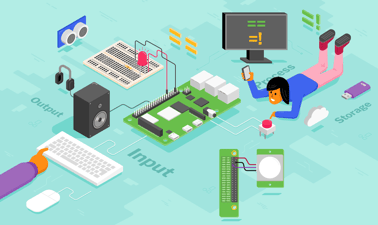4 semanas
2–4 horas por semana
A tu ritmo
Avanza a tu ritmo
Gratis
Verificación opcional disponible
Hay una sesión disponible:
Una vez finalizada la sesión del curso, será archivadoAbre en una pestaña nueva.
Comienza el 2 may
Termina el 5 sept
Teaching Physical Computing with Raspberry Pi and Python
De un vistazo
- Institution RaspberryPiFoundation
- Subject Formación docente
- Level Intermediate
- Prerequisites Ninguno
- Language English
- Video Transcript English
¿Te interesa este curso para tu negocio o equipo?
Capacita a tus empleados en los temas más solicitados con edX para Negocios.


